Located in the Nazarbad area of Mysore, Bombe Mane (Doll’s House) is based on the concept of the ‘Gombe Habba’ or doll’s festival that takes place every year during Dussehra. This exhibition space and store was established by Ramsons Kala Pratishtana, a research, training, design, development and conservation centre for art and craft forms with special emphasis on Mysore and its culture.
On the ground floor of Bombe Mane are dolls made from a variety of materials such as clay, plaster of Paris and wood sourced from all over the country. Notable exhibits include Navadurga dolls, Saptamatrika dolls and sculptures of the kings of Mysore. There are special displays on the first floor of the space that are curated around different themes every year.
12.308483026879, 76.666475459933

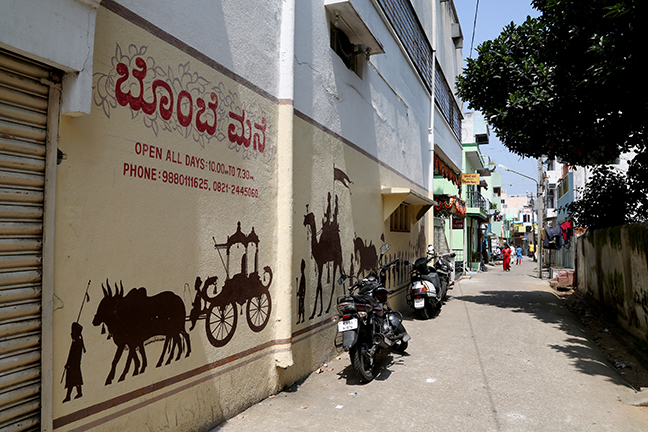
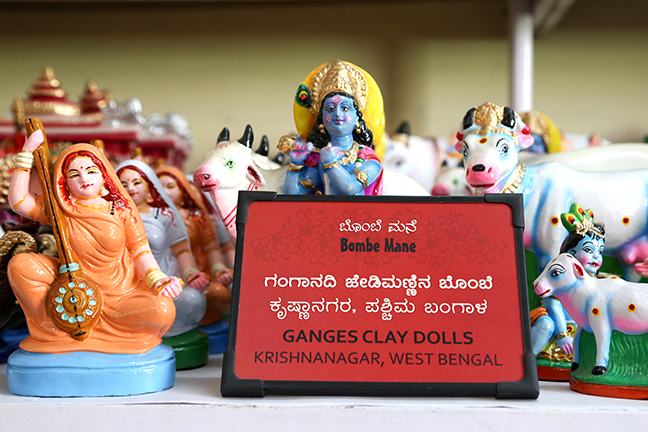
Clay dolls from Krishnanagar, West Bengal.
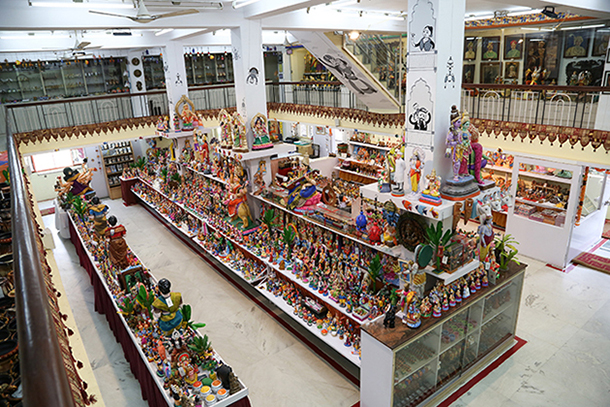

2017 marks 50 years since the Jnanpith Award was first given to a Kannada writer, Kuvempu. Since then, Kannada literature has been bestowed this honour eight times, with the awardees including D.R. Bendre and Shivaram Karanth. These sculptures are an homage to these literary artists.
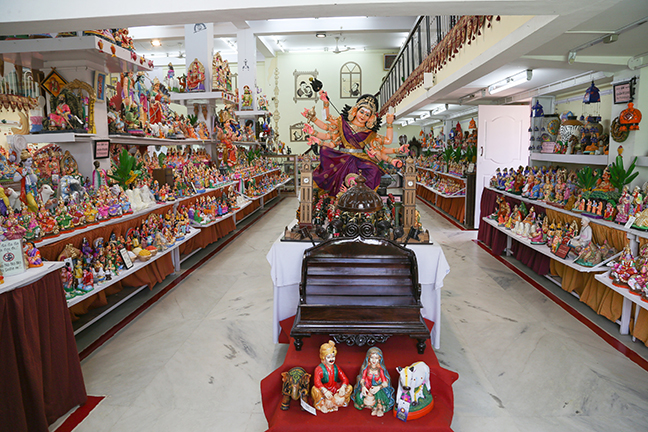
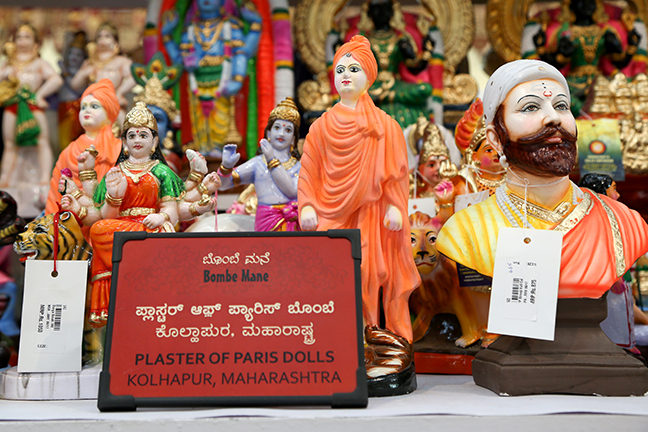
Plaster-of-Paris dolls from the Kolhapur area of Maharashtra.
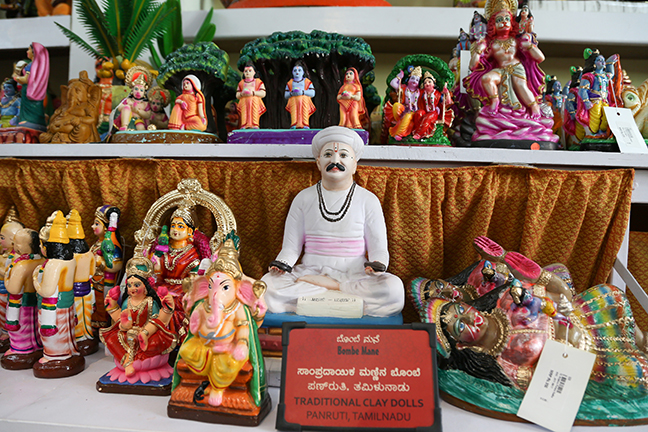
Traditional clay dolls from the Panruti area of Tamil Nadu.
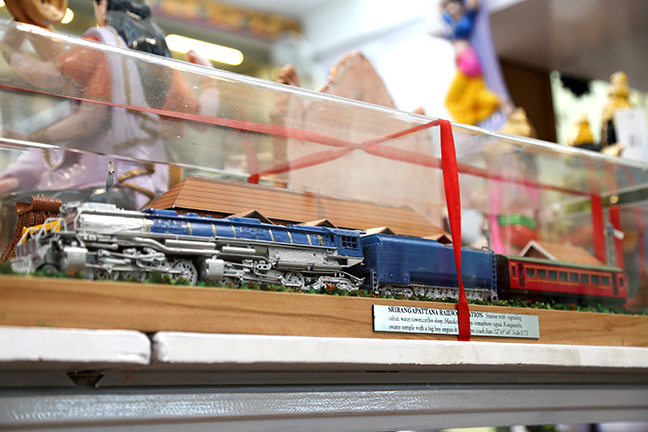
A miniature model of the Srirangapattana Railway Station including a signalling cabin, water towers, coffee shop, handicraft shop, semaphore signal and the Ranganatha Swamy Temple.
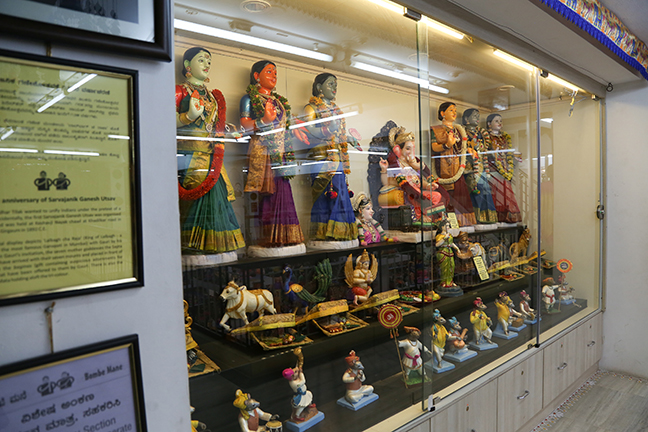
This display marks the 125th anniversary of the Sarvajanik Ganesh Utsav. It depicts 'Lalbagh cha Raja' (the king of Lalbagh, a replica of the most famous Ganapati in Mumbai) with Gauri by his side. Also seen are the saptamatrikas or the seven mother goddesses. A sculpture of Bal Gangadhar Tilak--who started the festival--is also seen here.
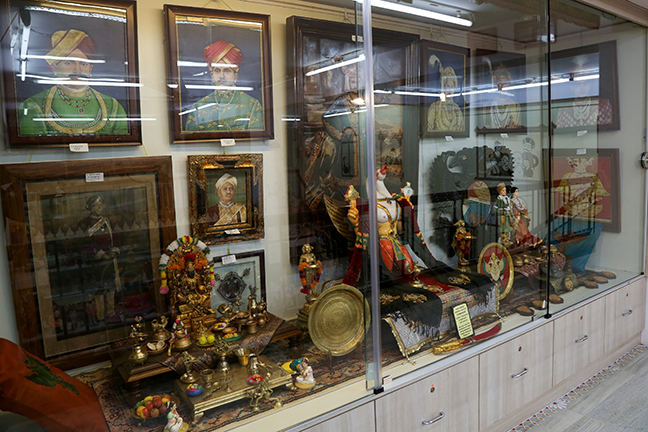
The 23rd Maharaja of Mysuru, Chamarajendra Wadiyar X, proclaimed 'Gandaberunda', the mythical double-headed eagle, to be his royal emblem, and instituted the Order of Gandaberunda in the year 1892. This display marks the 125th anniversary of the institution of this order.
